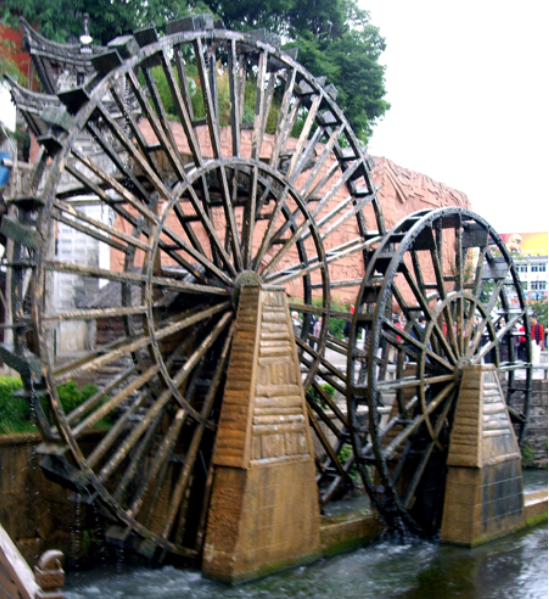
The changes in water conveyance technology reveal technical revolutions reverberate depending on the extent of the organizational and imaginative features of related inventions.
Postman argues that ideas emerge from the power of key tools over our imaginations.
![]() After contrasting Pursell with Pacey, answer this question: What is the predictive value of the Wittfogel hypothesis.
After contrasting Pursell with Pacey, answer this question: What is the predictive value of the Wittfogel hypothesis.
Pacey argues, that the correct context for tools includes conversations and materials revealing both the intent and fashions that are indicative of every culture.
![]() Technology as a means of determining a cultural level based on the tool complex such as: the stone age, bronze age, iron age and, eventually a machine age.
Technology as a means of determining a cultural level based on the tool complex such as: the stone age, bronze age, iron age and, eventually a machine age.
![]() But is there a worthwhile distinction to make between survival and fine technology? Pacey insists that there are important and revealing lessons we can discover separating one from the other and describing the details about how they relate to one another.
But is there a worthwhile distinction to make between survival and fine technology? Pacey insists that there are important and revealing lessons we can discover separating one from the other and describing the details about how they relate to one another.
The inventive imagination displayed in China based on the uses of water was an example of how survival and fine technologies were coadapted together to develop a means of motive power, crop irrigation, flood control and consummate fine techniques.
![]() Daedalus & Icarus story: meaning of technology and craft labor's relation to nature and wealth.
Daedalus & Icarus story: meaning of technology and craft labor's relation to nature and wealth.
Greeks were an olive, sheep and cattle culture in bronze age times while China was a rice, cattle, wax and silk culture with a growing population.
Chinese adapted water control for moving machinery and irrigating rice fields to canals to facilitate transportation with the construction of the Grand Canal that linked the Yangtze River in the southern frontier to the Yellow River in the heart of northern Han imperial manufacturing and population centers.
Pursell | Pacey | Tenner | Postman | Eberhart | Snow | Kaku
![]()
